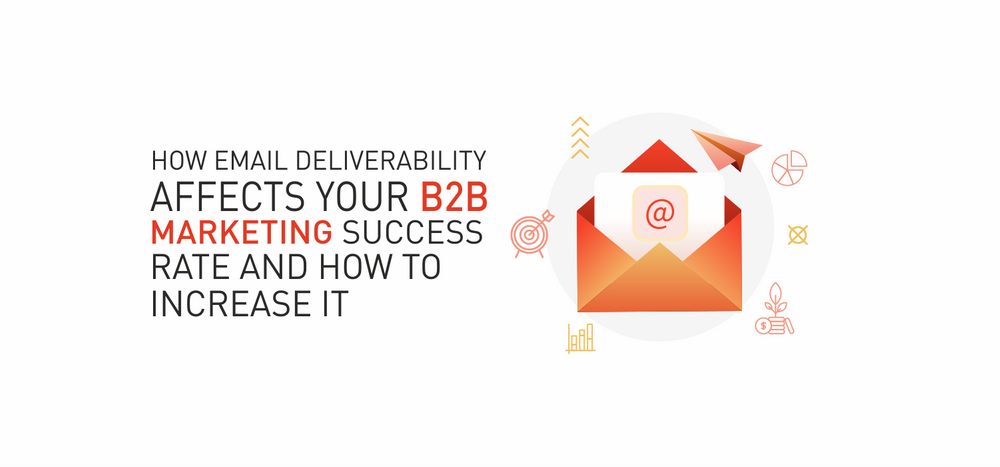Email marketing is an important tool for any B2B business. Research shows that 93 percent of B2B companies use it as part of their overall content strategy.
Two major factors influence the success of email marketing: content and deliverability. As a marketer, you know how important good content is. Without providing your customers with valuable content, they are less likely to engage with your company. How about deliverability? You might be wondering how it affects your email marketing strategy. To answer that, let us first define what deliverability is.
Email deliverability is a metric used by B2B companies to know whether their campaigns are reaching their subscribers’ inboxes. Many things influence your deliverability, such as your sender reputation and bounce rate. Understanding how it affects your B2B marketing will greatly help you tailor your strategy to maximize your email marketing results.
How Deliverability affects your B2B Marketing
If you’re like most B2B marketers, you greatly rely on emails to communicate with your customers and generate leads. Often, you have to deal with long buying cycles because nobody buys a hundred-thousand-dollar worth of IT infrastructure or some manufacturing equipment after reading one email.
Other than providing quality content, you want to make sure that your message gets delivered to your recipient at the right time. That makes email deliverability an essential factor for your B2B marketing success.

What affects your Deliverability rate?
Email deliverability is influenced by many factors. Among which are:
Sender reputation
Server/email service provider (ESP)
Sender domain
Spam complaints.
More than half of email deliverability complaints are attributed to poor sender reputation. It’s a scoring system managed by Internet/Email Service Providers (I/ESPs) to regulate email marketers and reduce the likelihood of spam and abuse.
While your sender reputation is largely affected by your email domain, other factors can either make or break your scores, such as your content and links (if your email contains links to other domains that have a low reputation, your sender score is likely to suffer as well).
Your spam rate is also a critical indicator of your deliverability rate. If you want to maintain high deliverability, your spam rate should beat less than one per thousand. There are two kinds of spam complaints:
Internal spam - this happens when your recipients unsubscribe to your mailing list and choose “spam” as a reason on the confirmation page.
External spam - this is when your recipient reports your email to their ESP by marking it as spam.
How to Improve Your Email Marketing Campaign Deliverability Rate
Deliverability rate is computed using the following formula: (Number of emails sent - number of bounces / number of emails sent) 100%. Your goal should be 95% or higher.
Improving your deliverability rate is easier than you think. Consider the following best practices:
Maintain a clean list. Your starting point to high deliverability is a clean list. Perform a simple data check to correct typographical errors, missing characters, or invalid syntax. You should also remove inactive email addresses to lower your bounce rate and monitor feedback loops to identify complainers and remove them from your list.
Consider email throttling. Instead of sending your email to your entire list all at once, you can consider sending it to a small batch of contacts. This lets you test the quality of your campaign. If the content isn’t engaging in the first batch, then it’s likely that the rest of your subscribers won’t find it engaging as well. Throttling is a good email marketing practice that can save you from potential spam reports and bounces.
Quality over quantity. Even though your goal is to reach as many customers as possible, always remember that in email marketing, quality is much more important than the number of your contacts. Sending emails to people who aren’t interested in your niche, product or content can severely hurt your deliverability. By removing inactive or non-responsive recipients from your contacts, your deliverability rate will increase because you will have fewer unsubscribes, unopens and bounces.
Conclusion
Email deliverability is an important metric in B2B email marketing. Understanding its impact on your marketing and learning some good practices to improve your deliverability rate can lead your business to success.
Written by our guest contributor: Nelly from EmailOversight.





